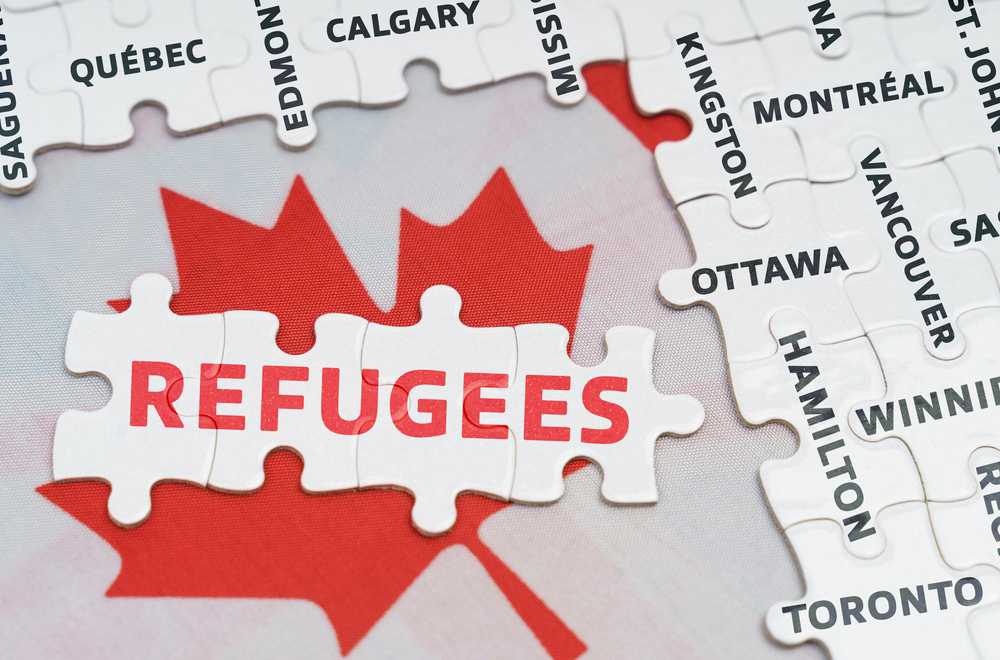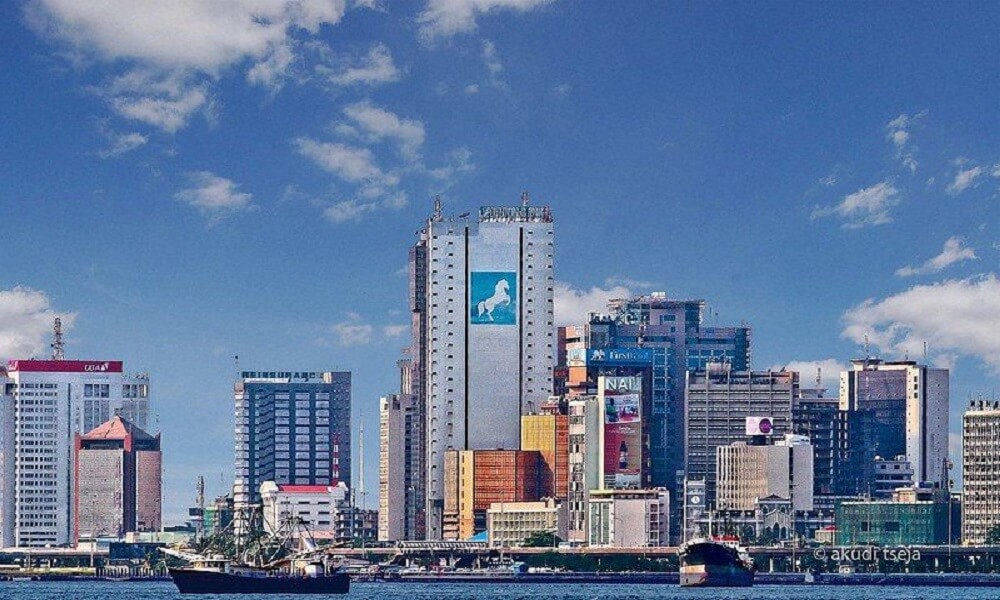Are you dreaming of starting a new life in Canada’s beautiful and diverse country? Well, you’re not alone! With its strong economy, high standard of living, and welcoming immigration policies, Canada has become a top destination for individuals and families looking to migrate. However, navigating the immigration process can be overwhelming and confusing.
That is why we put this article together on how to immigrate to Canada. From understanding visa requirements to finding the proper province to settle in, we provide personalized guidance every step of the way.
Why Migrate to Canada?

Canada offers numerous benefits and opportunities to those looking to migrate. From its thriving economy to its world-class healthcare system, there are plenty of reasons why people choose to make Canada their new home.
First and foremost, Canada is known for its strong and stable economy. The country has a low unemployment rate, which means there are ample job opportunities for skilled workers. Additionally, Canada is home to many thriving industries, including technology, healthcare, finance, and natural resources. This means there are plenty of options for individuals looking to build a successful career.
Another major draw of Canada is its high standard of living. The country consistently ranks among the top nations in the world for quality of life. Canadians enjoy access to excellent healthcare, education, and social services. Moreover, Canada is known for its safety and low crime rates, making it an ideal place to raise a family.
Canada is also a multicultural and inclusive society. The country embraces diversity and welcomes people from all walks of life. This means that newcomers to Canada can expect to be treated with respect and acceptance. Furthermore, Canada has a solid commitment to human rights and equality, providing a safe and inclusive environment for all residents.
Understanding the Canadian Immigration programs
Before you begin your journey to Canada, it’s essential to have a clear understanding of the immigration process. Canada offers various immigration programs and visa options, each with its own set of requirements and procedures.
The first step in the immigration process is determining which immigration program or visa category best suits your situation. There are several options to choose from, including the Express Entry program, the Provincial Nominee Program (PNP), and the Family Sponsorship program, among others. Each program has its own eligibility criteria and application process.
The Express Entry program is the most popular immigration program for skilled workers. It uses a points-based system to assess the eligibility of applicants based on factors such as age, education, work experience, language proficiency, and adaptability. If you meet the eligibility criteria, you can create an online profile and enter the Express Entry pool. Candidates with the highest scores are invited to apply for permanent residency.
For those who have a job offer from a Canadian employer, the Provincial Nominee Program (PNP) may be a suitable option. Each province and territory in Canada has its own PNP, with specific eligibility requirements and streams targeting specific occupations or skills. If you meet the requirements of a particular PNP stream, you can apply for a provincial nomination, which will give you additional points in the Express Entry system.
The Family Sponsorship Program allows Canadian citizens and permanent residents to sponsor their close family members for immigration to Canada. This program is designed to reunite families and keep them together in Canada. To be eligible for sponsorship, your sponsorer must meet certain requirements, including being at least 18 years old and financially able to support the sponsored family members.
How to immigrate to Canada as a permanent resident
Canada offers several immigration programs; Canada also provides different types of visas for individuals looking to migrate. If you are eligible to immigrate to Canada, these programs will provide you with the fastest way to immigrate. Understanding the following options will help you choose the right path for your Canadian journey.

Express Entry: Immigrate as a skilled worker
It is easy to come to Canada through express entry. The Express Entry immigration program allows skilled workers to migrate to Canada and apply for permanent residency. It is a fast and efficient way for individuals who possess the necessary skills and qualifications to immigrate to Canada. Under this program, applicants are evaluated based on factors such as age, education, work experience, language proficiency, and adaptability. The highest-scoring candidates are then invited to apply for permanent residency.
One of the main advantages of Express Entry is its quick processing times, with candidates being able to receive a final decision on their application within six months. Additionally, the program allows individuals to bring their families with them and enjoy all the benefits of living in Canada.
It provides access to healthcare, education, and social services, making it an attractive option for skilled workers looking to start a new life in Canada. Overall, Express Entry provides a streamlined and efficient pathway for skilled workers to obtain permanent residency in Canada and contribute to the country’s economy and culture.
Humanitarian and Refugee immigration and Family sponsorship do not require you to have special skills, and there is no mandatory minimum age requirement.
family sponsorship: parents, child, spouse
Canada is renowned for its openness and inclusivity, always welcoming family immigration to Canada who wish to make this diverse country their home. One such pathway to immigrate to Canada is through family sponsorship, which allows Canadian citizens and permanent residents to sponsor their parents, spouse, or children. This method promotes family reunification and provides an opportunity for families to live together in Canada.

Here is a guide on how to use family sponsorship to bring your parents, child, or spouse to Canada:
- Check Eligibility: First, you need to be at least 18 years old and a Canadian citizen or a permanent resident of Canada. If you’re a Canadian citizen living outside Canada, you must show that you plan to live in Canada when your sponsored relatives become permanent residents.
- Relationship Verification: You must prove that the people you are sponsoring are really your parents, spouse, or children. Birth certificates, marriage certificates, or other official documents might be needed.
- Financial Ability: You must be able to show that you can financially support the family members you are sponsoring. You need to meet a certain income level, and it will be higher if you are sponsoring more people.
- Agreement: You need to sign an agreement that says you understand your responsibilities and promises. The people you’re sponsoring will also need to sign an agreement.
- Application: Fill out the sponsorship application forms, which are available on the official Government of Canada website. Each type of family member you are sponsoring (parent, child, or spouse) may have a different form.
- Fees Payment: Pay the application fees. This includes processing fees, rights of permanent residence fees, and biometrics fees. The exact amount will vary depending on the type of sponsorship.
- Submission: Submit the application. You can usually do this by mail, but in some cases, online applications might be available.
- Wait for Approval: After you’ve submitted the application, it may take a while for it to be processed. You might need to provide more information or attend an interview. Be patient, and cooperate with any requests for additional information.
Work in Canada with work permit: Job offer to immigrate
Temporary visas or permits allow individuals to live and work in Canada for a specific period of time. These include work permits, study permits, and visitor visas. Work permits are issued to individuals who have a job offer from a Canadian employer. Study permits are granted to those who have been accepted into a Canadian educational institution. Visitor visas allow individuals to visit Canada for tourism and business or to visit family and friends.

Study in Canada: Come to Canada with a study permit
There are various ways to move to Canada, and one popular option is to study in this diverse and vibrant country. Canada has become an attractive destination for international students due to its world-class education system and welcoming attitude toward immigrants. To study in Canada, one must obtain a study permit, which is a document issued by the Canadian government that allows foreign students to live and study in Canada for the duration of their program.
This permit not only opens doors to excellent educational opportunities but also provides an opportunity to gain invaluable experience in Canada. By studying in Canada, international students can immerse themselves in a multicultural environment, interact with locals, and develop a global perspective that is highly valued by employers worldwide. Moreover, studying in Canada can also act as a pathway to permanent residency.
The Canadian government offers various immigration programs that allow international students to transition from temporary status to permanent residency. These programs take into account the skills, education, and work experience gained in Canada, making it easier for students to settle and contribute to Canadian society.
Refugee Program

Canada is a generous country when it comes to refugee immigration programs. Citizenship and Immigration Canada welcomes many refugees to Canada each year. Here are some of the immigration categories for refugees.
- Resettlement from Outside Canada: This program is for people who are outside their home country but not yet in Canada and have been affected by civil war or severe human rights abuses. The UN Refugee Agency (UNHCR), other referral agencies, and private sponsorship groups may identify individuals for resettlement.
- Asylum in Canada or Refugee Protection: This program is for individuals who make a refugee claim within Canada at a port of entry or at an Immigration, Refugees, and Citizenship Canada (IRCC) office. These individuals must demonstrate a fear of persecution in their home country to qualify.
- Private Sponsorship of Refugees Program: Under this program, Canadian citizens or permanent residents can sponsor refugees from abroad who qualify to come to Canada. Sponsors are responsible for providing financial and emotional support to the refugees for the duration of the sponsorship, typically for one year.
- Blended Visa Office-Referred Program: This is a program where refugees are identified for resettlement by the UNHCR and are also matched with private sponsors in Canada. The government of Canada and the private sponsors jointly support these refugees for their first year in Canada.
- Refugee Claimant: A person who has fled their home country and is asking for protection status in Canada is referred to as a refugee claimant. They remain claimants until the Immigration and Refugee Board of Canada decides on their claim.
- Government-Assisted Refugee (GAR) Program: Under this program, refugees are referred by the UNHCR or another designated referral organization. GARs receive support from the government or private sponsors for up to one year after their arrival in Canada or until they can support themselves, whichever comes first.
The eligibility for refugee status is determined based on Canada’s Immigration and Refugee Protection Act (IRPA). Once refugee status is granted, individuals may apply for permanent residence.
Provincial nominee programs
Provincial Nominee Programs (PNPs) play a vital role in Canadian immigration by allowing individual provinces and territories to nominate immigrants who possess the skills, qualifications, and work experience needed to meet their specific economic and labour market needs. Each province and territory in Canada has its own unique PNP tailored to address regional priorities.
These programs provide an alternative pathway for individuals who may not meet the requirements of federal immigration programs. By collaborating with the federal government, PNPs enable provinces and territories to select and attract immigrants who can contribute to their local economies and communities. Through PNPs, skilled workers, entrepreneurs, and international graduates can seize opportunities to settle and thrive in a specific province or territory that aligns with their goals and aspirations.
Atlantic Immigration Program
The Atlantic Immigration Pilot Program is an initiative by the Government of Canada, specifically by the Department of Immigration, Refugees and Citizenship Canada (IRCC), to promote economic development and growth in the Atlantic provinces. This program aims to address the demographic challenges faced by these provinces, such as an aging population and a low birth rate, by attracting and retaining skilled immigrants.
The program offers opportunities for employers in the Atlantic provinces to hire foreign workers who have the necessary skills and qualifications to fill job vacancies that cannot be filled locally. It also provides a pathway for foreign workers and their families to become permanent residents of Canada. The Atlantic Immigration Pilot Program has three streams: the Atlantic High-Skilled Program, the Atlantic Intermediate-Skilled Program, and the Atlantic International Graduate Program.
Each immigration stream has specific requirements and eligibility criteria that aim to align the needs of employers with the skills and qualifications of prospective immigrants. This program not only benefits the Atlantic provinces by addressing labour market shortages and encouraging economic growth but also provides immigrants with the opportunity to enhance their quality of life and build a future in Canada.
Caregivers Program
The Caregivers Program in Canada is a specialized immigration pathway designed to facilitate the entry of qualified caregivers to provide essential support for Canadian families and individuals in need of care. The program consists of two main streams: the Caring for Children Program and the Caring for People with High Medical Needs Program. Caregivers who meet the program requirements can apply for permanent residency in Canada after their contract, offering them the opportunity to work and live in the country on a long-term basis. To be eligible, applicants must have relevant work experience, meet language proficiency requirements, obtain a job offer from a Canadian employer, or receive a positive Labour Market Impact Assessment (LMIA).
Business Immigration
If you possess extensive experience in business management and are eager to establish a new business in Canada, you are in a fortunate position; one of the easiest ways to immigrate to Canada is through the business immigration programs. Canada offers various business immigration programs that provide a relatively straightforward pathway to immigration.
These programs are designed to attract experienced entrepreneurs, investors, and self-employed individuals who can contribute to the Canadian economy. By leveraging your business expertise and meeting the program requirements, you can explore opportunities to immigrate to Canada and make a positive impact on the country’s vibrant business landscape.
Researching and Choosing the Right Canadian Province or Territory
When you offer to immigrate to Canada, it’s important to do research and choose the right Canadian province or territory to settle in. Canada is a vast country with diverse landscapes, climates, and job markets. Each province and territory has its own unique advantages and opportunities.
Consider factors such as job prospects, cost of living, climate, and lifestyle when making your decision. For example, if you work in the technology industry, you may want to consider provinces like Ontario or British Columbia, which have thriving tech sectors. If you prefer a slower pace of life and enjoy outdoor activities, provinces like Alberta or British Columbia, with their stunning natural landscapes, maybe a better fit.
Researching the different provinces and territories will help you narrow down your options and make an informed decision. Consider visiting each province or territory if possible, or connect with individuals who have already migrated to Canada to get their perspectives and insights.
Assessing Your Eligibility for Canada Immigration
Before you begin the Canadian immigration process, it’s important to assess your eligibility. Each immigration program and visa category has its own set of requirements and criteria. By evaluating your eligibility, you can determine which program or visa is the best fit for your situation.
Factors that may affect your eligibility include your age, educational background, work experience, language proficiency, and adaptability. Each program or visa category may have minimum requirements for these factors. For example, the Express Entry program requires applicants to have at least one year of continuous full-time work experience in a skilled occupation.
Additionally, some programs or visa categories may have specific requirements or restrictions. For example, the Provincial Nominee Program (PNP) may require applicants to have a job offer from a Canadian employer in a specific occupation or industry.
It’s important to carefully review the eligibility criteria for each program or visa category to ensure you meet the requirements. If you’re unsure about your eligibility, consulting with an immigration expert can help clarify any doubts and provide guidance.
Gathering the Necessary Documents for Your Canadian Visa Application
Once you have determined your eligibility and chosen the immigration program or visa category, the next step is to gather the necessary documents for your Canadian visa application. Each program or visa category will have specific document requirements, so it’s important to carefully review the instructions provided by the Canadian government.
Common documents that may be required include:
- Passport: A valid passport is required for all visa applications. Make sure your passport has at least six months of validity remaining.
- Educational Documents: Depending on your program or visa category, you may need to provide educational documents such as transcripts, diplomas, or degrees. These documents should be authentic and may need to be assessed by an authorized organization.
- Language Proficiency Test Results: For most immigration programs, you will need to demonstrate your language proficiency in English or French. This is typically done through standardized language tests such as the IELTS or CELPIP for English or the TEF or TCF for French.
- Work Experience Documents: If you are applying to a program that requires work experience, you will need to provide documents that prove your employment history. This may include reference letters, employment contracts, or pay stubs.
- Police Clearance Certificates: Depending on your country of residence, you may need to provide police clearance certificates to prove your good character and conduct. These certificates should be obtained from the relevant authorities in each country you have lived in for a specified period of time.
- Medical Examination Results: Some visa categories require a medical examination to ensure you meet the health requirements for entry into Canada. You will need to undergo a medical examination by a designated panel physician and provide the results as part of your application.
- Proof of Funds: To demonstrate your ability to support yourself in Canada, you may be required to provide proof of funds. This can include bank statements, investment statements, or other financial documents that show you have sufficient funds to support yourself and any accompanying family members.
It’s important to carefully gather and organize all the required documents to ensure a smooth and successful visa application process. Missing or incomplete documentation can lead to delays or even rejection of your application.
Submitting Your Canadian Visa Application
Once you have gathered all the necessary documents, it’s time to submit your Canadian visa application. The application process will depend on the immigration program or visa category you have chosen.
Most visa applications are submitted electronically through the Canadian government’s online portal. You will need to create an account and follow the instructions to complete the application form. Make sure to double-check all the information you provide to avoid errors or discrepancies.
As part of the application process, you will also need to pay the required application fees. The fees vary depending on the program or visa category you are applying for. It’s important to keep track of the payment receipts and any reference numbers provided.
Once your application is submitted, it will be reviewed by immigration officials. The processing time can vary depending on the program, visa category, and volume of applications received. You can check the current processing times on the Canadian government’s website.
Waiting for a Decision and the Next Steps
After submitting your Canadian visa application, the next step is to wait for a decision. Depending on various factors, the processing time can range from a few weeks to several months. It’s important to be patient during this time and avoid making any travel plans until you receive a decision.
If your application is approved, you will receive a Confirmation of Permanent Residence (COPR) or a temporary visa, depending on the program or visa category. This document will outline the next steps you need to take, including obtaining a permanent resident card, attending a landing appointment, or undergoing a medical examination.
If your application is refused, you can appeal the decision or reapply under a different program or visa category. It’s important to carefully review the reasons for refusal and seek professional advice if needed.
Preparing for Your Move to Canada
Once you have received approval for your Canadian visa, it’s time to start preparing for your Canada travel guide. This includes making arrangements for housing, healthcare, finances, and other essential aspects of your new life in Canada.
Finding suitable housing is a priority when moving to Canada. Depending on your preferences and budget, you can choose to rent or buy a property. Researching the housing market in your chosen province or territory will give you an idea of the average rental or housing prices in the area.
Healthcare is another important aspect to consider. In Canada, healthcare is publicly funded and available to all residents. However, there may be a waiting period before you are eligible for provincial healthcare coverage. During this time, it’s recommended to have private health insurance to cover any medical expenses.
Financial planning is crucial when moving to a new country. Make sure to open a Canadian bank account, transfer your funds, and familiarize yourself with the Canadian banking system. Additionally, it’s important to understand the cost of living in Canada and plan your budget accordingly.
Settling in Canada and Adapting to Canadian Culture
Once you arrive in Canada, the process of settling in and adapting to Canadian culture begins. Canada is known for its multicultural society and welcoming nature, making it easier for newcomers to integrate and find their place.
Learning the official languages of Canada, English, and French, can significantly enhance your ability to communicate and engage with others. Enrolling in language classes or participating in language exchange programs can help you improve your language skills.
Getting involved in the local community is another great way to settle in and make connections. Joining community organizations, attending cultural events, and volunteering can help you meet new people and learn more about Canadian customs and traditions.
It’s important to be patient with yourself during the settlement process. Adjusting to a new country takes time, and it’s normal to experience a range of emotions. Remember to take care of your mental and physical well-being and seek support if needed.
Conclusion: Ways to immigrate to Canada in 2024
Migrating to Canada is an exciting and life-changing decision. With its strong economy, high standard of living, and welcoming immigration policies, Canada offers numerous opportunities for individuals and families looking for a fresh start.
By understanding the Canadian immigration process, researching different provinces or territories, and assessing your eligibility, you can make informed decisions and increase your chances of a successful migration.
Gathering the necessary documents, submitting your visa application, and preparing for your move will ensure a smooth transition to your new Canadian life. Once you arrive in Canada, take the time to settle in, adapt to Canadian culture, and build new connections. Remember to be patient, embrace the multicultural nature of Canada, and seek support when needed.
FAQs about migrating to Canada
What are the requirements to immigrate to Canada?
Immigrating to Canada involves meeting specific requirements that depend on the immigration pathway chosen. Some common routes are the Express Entry for skilled workers, requiring skilled work experience and English or French language proficiency; Family Sponsorship for those with a close relative who’s a Canadian citizen or permanent resident; and the Start-up Visa for individuals planning to start a job-creating business in Canada. Other requirements across these routes can include education, age, and having a job offer in Canada.
Note that these requirements can change from time to time.
Can you immigrate to Canada as a US citizen?
Yes, U.S. citizens can immigrate to Canada. Like citizens of any other country, they have to apply through one of the immigration programs that Canada offers, such as Express Entry for skilled workers, Family Sponsorship if they have close relatives in Canada, or the Start-up Visa program if they intend to start a business. It’s also possible to move to Canada temporarily, for example, as a student or a worker. Each program has its own requirements, and applicants would have to meet those to succeed in their immigration process.
How much money is needed to immigrate to Canada?
The amount of money needed to immigrate to Canada can vary widely based on the immigration pathway and individual circumstances. For Express Entry, the Canadian government requires proof of settlement funds, which is around CAD $13,757 for a single individual, with the amount increasing for each additional family member. This does not include application fees, which can be approximately CAD $1,325 per adult applicant and CAD $225 per dependent child. Additionally, there may be other costs such as language testing, educational credential assessments, medical exams, police certificates, travel costs, and more. However, these amounts are subject to change, and the most accurate information can be found on the Government of Canada’s official immigration website.
Is it easy to immigrate to Canada?
The ease of immigration to Canada varies widely and depends on numerous factors, including the individual’s personal circumstances, the immigration pathway they choose, and the specific requirements of that pathway. Some may find the process straightforward, particularly if they have skills, qualifications, or personal circumstances (like a close family member in Canada) that align with Canada’s immigration priorities. However, others may find the process challenging, especially if they lack the requisite language skills, work experience, or financial resources. As such, it’s critical to research and understand the specific requirements of each immigration program before beginning the process.



